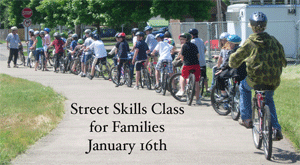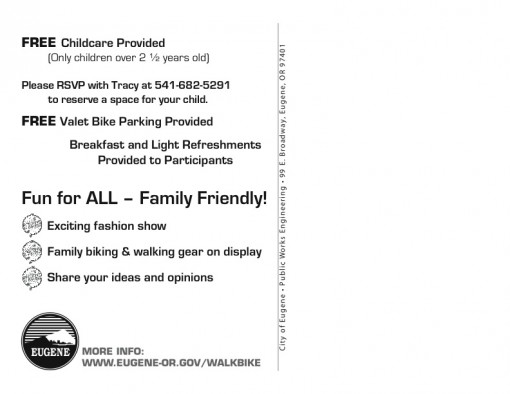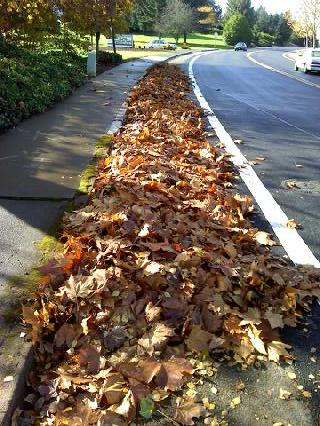Originally Posted on the BTA Blog (by: Susan)
The members of Connecting Eugene are putting on a party this Saturday, April 24th to celebrate the Willamette River Appreciation Day. This is a free event with activities for all ages. There will also be speakers to address the challenges and opportunities facing the Willamette River now and in the future.
Riverfront Celebration!
Saturday, April 24th, 10 am – 4 pm
South Bank Path between EWEB and Autzen Footbridge
—
The BTA has been keeping tabs on Connecting Eugene’s fight against the development of the Oregon Research Institute building along the Willamette River. Here’s an update on what’s happened since January.
• Connecting Eugene appealed the City’s decision to grant an extension of a Conditional Use Permit to the University of Oregon. This appeal may take several months or more to resolve. Even after this issue is resolved the University must obtain a building permit and demonstrate that the proposed development is consistent with the 1988 Master Plan.
• Members of Connecting Eugene have met with Mayor Piercy and Councilor Alan Zalenka to discuss viable alternative sites for the Oregon Research Institute Building–including a site within the Riverfront Research Park designated for office buildings.
• The faculty of the School of Architecture and Allied Arts, the Graduate Teaching Fellow Federation (GTFF), and the Graduate Evolutionary Biology and Ecology Students have all passed resolutions opposing development north of the railroad tracks until a new master plan has been developed. These resolutions join many previous resolutions by UO students and faculty, and over 900 petition signers like yourselves.
• Amelie Rousseau was elected ASUO President. She strongly opposes development along the riverfront.
• EWEB (Eugene Water and Electric Board) continues to engage the public in planning the redevelopment of their site while the University of Oregon keeps the door closed to public involvement on their property just upstream from EWEB.
For more information visit the Connecting Eugene website.


 EUGENE, OR (April 6, 2010) – In its May issue, Bicycling magazine ranks the fifty most bike-friendly cities in America and Eugene comes in at number five. Rounding out the top five spots as overall best are Minneapolis, MN; Portland, OR; Boulder, CO; and Seattle, WA.
EUGENE, OR (April 6, 2010) – In its May issue, Bicycling magazine ranks the fifty most bike-friendly cities in America and Eugene comes in at number five. Rounding out the top five spots as overall best are Minneapolis, MN; Portland, OR; Boulder, CO; and Seattle, WA.



